The distance from the gas stove to the hood: the rules and regulations for installing the device
We are sure that if you need to install an exhaust device, then you will use the help of the wizard. Meanwhile, in order to choose the distance from the gas stove to the hood, you will have to forget about the rush and take into account on average more than five factors that are relevant to your kitchen.
You would not want to reinstall, would you? The installation of the hood is another link in the arrangement of the kitchen, and the work done in quality should not be inferior to everything else.
When installing the hood, errors occur due to which the appliance becomes unusable over time. Consumers with a broken device sometimes spare their money on new appliances and begin to ventilate the kitchen several times more often and longer. In order to prevent this from happening with your hood, we have collected all the important information about the installation height and the installation rules of the device.
The content of the article:
Cooker hood
Hoods above the stoves improve local ventilation, air circulation throughout the room. Built-in ventilation ducts cope poorly with the same task, and the kitchen owners have a choice - use an exhaust device or constantly open windows, both in summer and in winter. Furniture and decoration will retain their appearance if the steam from the dishes comes out quickly.
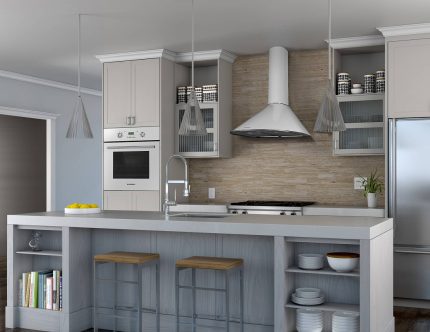
Ventilation devices are of 2 types according to the mode of action and have more than 10 varieties in structure. Hoods are placed over gas stoves, electric, mixed-type appliances.
The properties of the air become better due to the fact that the hood eliminates:
- steam;
- gas combustion residues;
- pollution
- soot;
- smells.
Devices clean the gaseous medium by flowing (discharge) and recirculation methods. Type 1 devices draw air in and out of the building. Among the shortcomings, it is worth noting that the systems need channels, and that the kitchen has to be filled with air from the street.
Recirculation hoods they take in the air mass, pump over the filters and give it back. They purify the air for a long time, and their parts wear out quickly, which is the main drawback.
The smallest installation height of the hood in the case of a gas stove is 75–85 cm between the lower edge and the burners, in addition, the exact numbers are indicated in the equipment instructions. Devices with less traction, about 300 m³ / h, are usually placed along the lower boundary of the interval, i.e. in 75 centimeters.
The same arrangement is suitable for systems that do not have a 10-centimeter wide margin along each side of the slab. Hoods for electrical equipment are mounted on average 10 cm lower - 65-75 cm above the hob.
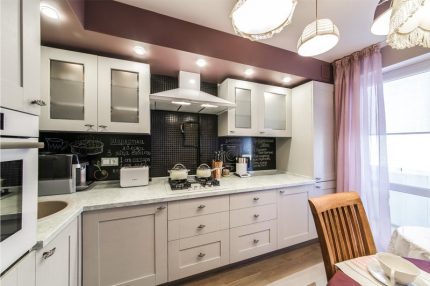
In general rules there is an exception for inclined systems. Above the gas stoves they are mounted 55-65 cm along the lower edge. 20 cm higher than over electric, with which there is enough gap of 35-45 cm.
All types of exhaust systems are placed on the lower edge no higher than 90 cm above the hob of any appliance. An island hood 1.3–1.5 meters wide can be raised another 5–10 cm. Non-observance of the lower installation limit increases the risk of parts breaking and burning of greasy film.
On the location height over a gas or any other stove the material of the hood is not affected. For placement within the acceptable interval - too.

When choosing a height, three additional factors are taken into account:
- The presence of organized natural ventilation of the supply and exhaust type and the distance to it. The shorter the distance, the higher you can mount the device for the stove.
- The configuration of the kitchen, furniture and household appliances. We are talking about placing the second tier of the headset, objects above the hood, the height of the ceilings, as well as the availability, size and features of the plate cover.
- The presence of a stove. A preheated oven adversely affects the interior of the fume hood. Over a standard device with a stove, the hood is installed closer to the upper limit of the norm, if nothing prevents it.
Difficulties arise due to the structure of the exhaust device. Suspended telescopic are designed to be installed below the bottom of the hinged drawer, which limits the choice of height. The same goes for embedded models, which "replace" the bottom of the furniture section, but the cabinets for fixing and hiding the air intake in case of which they change.
The installation of wall hoods at the optimum height is sometimes prevented by pipes and plate covers. Island models are attached to the ceiling, so their height is determined by the dimensions at the lower level.

Sockets must not be used between the hob and the bottom of the hood. A power point is provided at a level of 2–2.5 meters above the floor, inside the wall cabinets or immediately above them.
The outlet is separated by at least 15 cm from the duct. The most universal height for the nest is considered to be a level of 200 cm above the floor and 110 cm above the stove or worktop.
Calculation of the power of the exhaust device
By SNiP 2.08.01-89 the rate of removal of treated air for 4 hotplates is 90 or more cubic meters per hour. GOST 26813-99 It requires ventilation units from 200 m³ / h.
But to install mechanical (forced) ventilation in the kitchen requires SNiP 2.04.05-91.
Before choosing a height and installing, determine the desired performance. Installing a weak system in a large kitchen is a waste of money.
The minimum power for effective air purification is determined by the formula N = S × h × 12 × 1.3where:
- S is the area of the kitchen;
- h is the height of the ceilings in the room;
- 12 - so many times you need to update the air in the kitchen for an hour;
- 1.3 - the equivalent of 30% - an approximate indicator of power loss due to the movement of air through bends, joints, holes and filters.
A small margin without the specified 30 percent is added to the result, because calculation of hood performance manufacturers are inaccurate.
Owners of middle kitchens should focus on models with a capacity of 350, 400, 450 and 500 m³ / hour. The indicator is selected no more than the bandwidth of the used integrated ventilation channels.
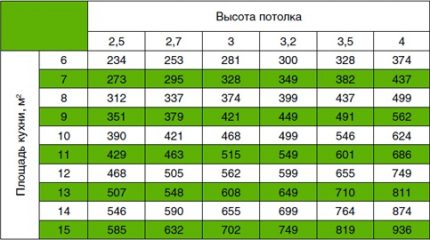
The factor "12" can be increased to 20, if the stove is gas and with increased power. They also build it up for electric appliances, also by the criterion of productivity (up to 15). The minimum coefficient value is 10.
The path of the air hose is laid so as not to obstruct the built-in ventilation grille. Avoid complex geometry and large remoteness of duct sections.
In apartments, communication to the opening to the street cannot be laid without permission. For more details on the intricacies of selecting hoods, see this stuff.
Installing an exhaust system over a gas stove
First, communications and furniture arrangements — planned or finished data — are marked on paper. For absolute accuracy, draw lines on the walls.
Be sure to consider electrical safety. You can not do without grounding, and if there is no corresponding outlet in the kitchen, then they put it in the electrical panel residual current device (RCD) at 16 amp.
The device is connected to the power network by three wires: phase, zero and earth. In the shield they find a dead neutral with nuts and wires. From it spend their own wire with a cross section of 2.5 mm². A vein is thrown separately or on top of others, if there is a technical possibility.
It is impossible to disconnect already fixed wire independently - it may cause electric shock. The exhaust system is connected through a 6.3 amp machine.
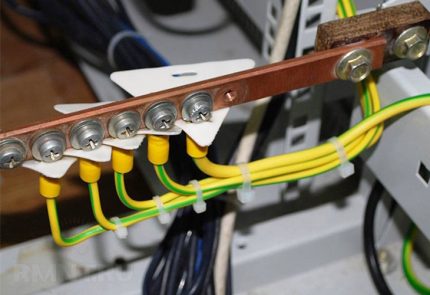
The new apartments have Euro-type sockets and a ground loop. The device is connected to the terminal with the inscription GND (Ground) or with three lines of different sizes. On exhaust devices without a grounding socket, the wire is attached to the metal part.
Safe models are hoods with auto shut off, which stop working after a short circuit or fire.
After the initial measures, they proceed to marking the place for the exhaust device, counting the fastening parts. For the last time, measure the distance from the hood to the stove and compare it with the norm of height above gas appliances.
The exhaust duct is made as straight and short as possible, but without violating the relative directness in the joints and without angles significantly different from the straight line. Transitional parts between sections are used with a slightly rounded shape. Ideally, turns consist of many short parts.
The cross-sectional area of the passage is changed only if there are no other options. In total, no more than three bends are made. With a clogged ventilation shaft, the hood will work poorly, and then use circulation systems and do without an air duct.
Mounting the hood between the cabinets
First, a ventilation sleeve is assembled. Air ducts come in square and round sections, and the typical size is 13 × 13 cm. The diameter is selected for the hole made in the ventilation grill or wall, kept constant over the entire length.
Preference is given to ducts made on the basis of plastics or metals with a smooth interior and check valve.

Stages of installing an exhaust device:
- We drill holes for hardware or screws to secure the hood.
- We screw fasteners.
- We check the horizontalness between the screws at the building level.
- We twist the fasteners to the working position.
- We hang the hood on the screws. We make sure that the mounts withstand the load. We tighten the screws more tightly if there is a need.
- We connect the exhaust device with air ductthat is already attached to ventilation or another terminal.
- Plug the device into a power outlet. We check how it works in different power modes.
Devices with a decorative box are installed without a frame. After a successful start of the hood, the decorating part is put in place.
Detailed instructions for connecting the hood to ventilation can be found in our other article.
Other mounting options
Hoods are attached not only between the cabinets, but also inside. In furniture sets, modules are sometimes made for an exhaust device.
Installation in an unsuitable section includes three stages: preparing a hinged cabinet, securing it and supplying communications, installing a working device.
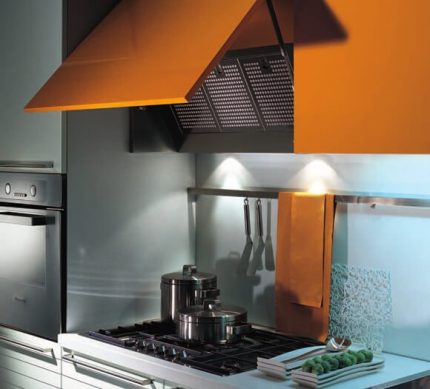
Hinge box preparation:
- Turn off the door.
- Remove the module from the hinges on the wall. The second person must support the locker so that it does not fall. You can still make temporary fastening with adjacent walls of other boxes.
- Dismantle the lower shelf of the housing. We are convinced of compatibility of equipment and a locker. We trim the sides if necessary.
- We determine how deep the duct will be in the cabinet. Then we cut parts from the upper and inner shelves according to the outlines of the air channel and the depth of the location. We also provide a place for the power cord.
- In the inner shelf, we make four holes for fixing the hood - if the configuration of the device provides such a mount. In other cases, we mount rails.
The locker is installed back and a power connection is made. The hood is built into the designated space and fastened with self-tapping screws. Then they connect to the air duct, and the shelves are temporarily removed if necessary.
At the end, they return the door to the place, but, if possible, redo it to a lift. If desired, add gas lifts.
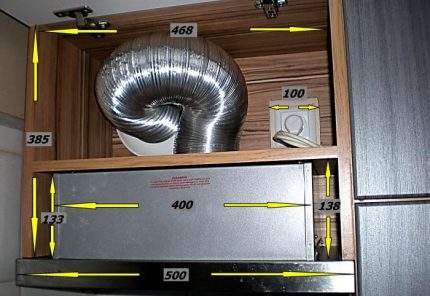
It makes sense to equip a tight kitchen with a hood without a shell, such as a decor or built-in wardrobe, which gradually lose their attractive appearance. The role of the supporting structure can be assigned to a makeshift frame made of metal corners.
The parts are assembled into a rectangular structure and then everything is finally measured and the place for supporting self-tapping studs on which the frame will be held is determined. Even before installation, a ground wire is brought to the frame. In the end, it remains to fix the hood in the frame, hang the device, connect it to the finished duct and run for testing.
Conclusions and useful video on the topic
Installation height above the stove, installation features and some interesting points:
Overview of the nuances of the structure and connection of the hoods, various errors:
Cleaning the grease filter of the hood in order to increase the power of the device and extend its service life - methods:
In the article we provided comprehensive information about the nuances that will have to be considered before placing the exhaust device. We specified standards for the extraction height above the gas stove, compared them with the norms for electric.The lower installation level starts at 75 cm above the gas burners.
Inclined appliances can be hung up to 55 cm. The height is also determined by the manufacturer's instructions, the dimensions of the hood, its power, the pattern of the kitchen and furniture. Devices for working on stoves are flowing and circulating. Devices of the 2nd type purify and return air.
Write comments and ask questions about the topic of the article. Tell us what difficulties you encountered when installing the ventilation device above the stove. The contact form is located under the article.

 Standards for the distance from the gas meter to other devices: features of the arrangement of gas flow meters
Standards for the distance from the gas meter to other devices: features of the arrangement of gas flow meters 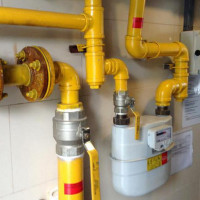 Paint for gas pipes: rules and regulations for painting inside the apartment and on the street
Paint for gas pipes: rules and regulations for painting inside the apartment and on the street 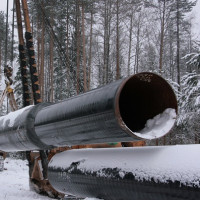 Calculation of the diameter of the gas pipeline: an example of calculation and features of the gas network
Calculation of the diameter of the gas pipeline: an example of calculation and features of the gas network 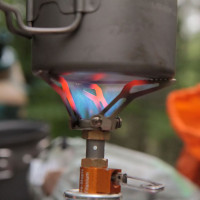 How long is the gas cylinder enough: gas flow calculation for typical gas cylinders
How long is the gas cylinder enough: gas flow calculation for typical gas cylinders 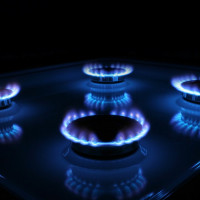 How much gas a gas stove consumes: gas flow calculation procedure
How much gas a gas stove consumes: gas flow calculation procedure 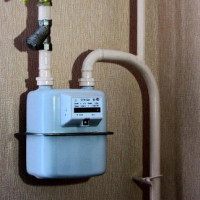 How to choose a gas meter: guidelines for choosing a device for a private house and apartment
How to choose a gas meter: guidelines for choosing a device for a private house and apartment  How much does it cost to connect gas to a private house: the price of organizing gas supply
How much does it cost to connect gas to a private house: the price of organizing gas supply  The best washing machines with dryer: model rating and customer tips
The best washing machines with dryer: model rating and customer tips  What is the color temperature of light and the nuances of choosing the temperature of the lamps to suit your needs
What is the color temperature of light and the nuances of choosing the temperature of the lamps to suit your needs  Replacement of a geyser in an apartment: replacement paperwork + basic norms and requirements
Replacement of a geyser in an apartment: replacement paperwork + basic norms and requirements